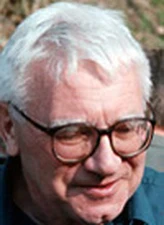George Kukla

The 2003 Milutin Milanković Medal is awarded to George Kukla for his pioneering study of terrestrial records and for linking past climate changes with Milankovich’s astronomical theory of climate.
George Kukla is the US scientist born in the former Czechoslovakia. Trained in geology, he has worked in different countries, having a great expertise in geologic exploration. During his stay in Eastern Europe, he worked in the Czech and Austrian loess series and wrote numerous papers on Pleistocene stratigraphy, soils and geophysical properties. He has focussed on the definition of a unified Quaternary stratigraphy, combining the classical Alpine Glacial system with mid-European fluvial terraces, the loess stratigraphies and the marine isotope stages. This led him to realize that the cyclicity in the continental deposits is more complex than earlier believed and that it closely relates to Milutin Milankovich’s astronomic theory. Veracity of the latter at that time was widely questioned due to misinterpreted radiocarbon dates. George Kukla applied Milankovich’s dating to the Quaternary systems already in early 1960’s and in a still up-to-date review of the “Periglazialzone Löss und Paläolithikum der Tschechoslowakei” published in 1969, seven years prior to the famous Hays, Imbrie and Shackleton’s paper in Science. Although he already started his investigation on the relations between past climates records and the astronomical forcing in Czechoslovakia, George Kukla tremendously expanded his studies of this topic when in 1971 he moved to the Lamont- Doherty Geological Observatory in USA. In close cooperation with many paleoclimatologists, he became one of the leading scientists specialist in Milankovich’s theory.
George Kukla, as one of the pioneers, investigated loess on several continents. His work in Europe and China, following that of Professor Liu Tunsheng, is well known. It provided a remarkable tool to study the Milankovich astronomical theory of climate changes, and was followed by numerous students who stepped in. But George Kukla’s interest in the astronomical theory does not rely only on the loess and the oceanic sediments. He is interested by linking different types of forcing, studying the impact of present concentration of CO2, the albedo variation due to the variation of the snow cover, impact of insolation on ENSO and on the cycle of atmospheric water vapor; all the elements playing an important role in the climate theory. Directly or indirectly. George Kuka’s work is always oriented toward the advancement and refinement of Milankovich theory as most of his papers testify. He organized several workshops on the relationship between the past climate records and the astronomical theory, with results published in international journals or in the NATO Series. George Kukla has also been invited to speak on many scientific workshops and conferences about Milankovich’s theory.
